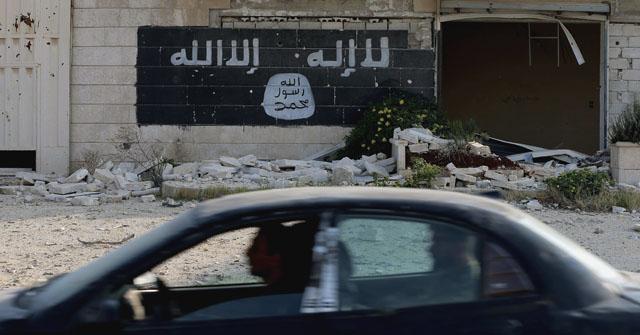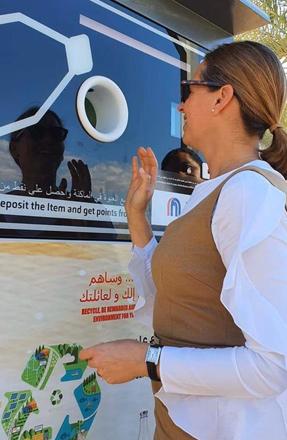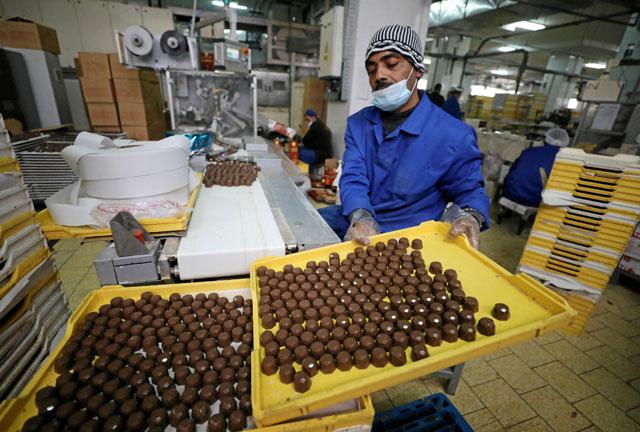You are here
War-ravaged Syrian industrial zone hopes for new life
By AFP - Nov 20,2014 - Last updated at Nov 20,2014

ALEPPO, Syria — Once touted to become the biggest industrial zone in the Middle East, Sheikh Najjar near the ravaged Syrian city of Aleppo is now simply hoping for a second chance.
Most of its buildings have been reduced to carcasses — destroyed, burned and pillaged during the past two years of fighting in Syria's former industrial powerhouse.
But with the government's recapture of the area, Aleppo's businessmen are taking their first steps to return and restore the once-bustling zone.
"The soldiers retook the industrial zone on July 7 and when we entered a week later, we saw the devastation. Some buildings had simply disappeared," said 55-year-old Mohammed Handie, the zone's director general.
"Despite everything, we remain optimistic, because in the weeks that followed my arrival, I received many requests to return, rebuild, refurbish machines," he added. "It was very encouraging."
Syria's civil war swept into Aleppo in mid-2012, and the fighting quickly divided the city between regime control in the west and rebel control of the east.
Sheikh Najjar, located to the northeast of the city, was in rebel hands and the scene of fierce battles until its recapture.
Near the industrial zone, the walls are still daubed with graffiti left behind by rebels, including the flags of the Islamic State jihadist group and Al Qaeda affiliate Al Nusra Front.
"Freedom for us and hell for the Alawites," reads one slogan, referring to the religious community to which President Bashar Al Assad belongs.
'Working night and day'
The Syrian conflict that began in March 2011 has ravaged the country's economy and infrastructure.
Economists say gross domestic product has contracted more than 40 per cent, millions of homes have been destroyed, half the workforce is unemployed and inflation is around 50 per cent.
Despite the lingering presence of snipers and the occasional sound of shelling, workers labour away in Sheikh Najjar, rebuilding walls, repainting and installing generators and cables.
"When I returned, my factory had been burnt. All the walls you see, I rebuilt and repainted them," said 51-year-old Mohammed Hajar, owner of Al Bayan factory.
"Now I am repairing my machines," added Hajar, whose business making fabric for furnishings once exported to Bulgaria, Romania and Serbia.
"I've been asleep for two years! So now, I'm working night and day. I have six Italian looms. Two are lightly damaged and won't take long to get back to work, two others were burnt and I have refurbished them," he continued.
Two more charred looms, covered in a tarpaulin, are awaiting their turn, but the factory is already restarting work.
It is producing 1,000 metres of coloured fabric a day, after repairs that have already cost Hajar $75,000.
To return the factory to full capacity would cost the dynamic entrepreneur eight times his outlay so far.
'Back to life'
When the industrial zone was established in 2004, it was intended to host 6,000 companies, and 1,250 were already there.
Most produced textiles, though there were also engineering, food, and chemical and pharmaceutical operations, employing 42,000 people.
Today, 140 businesses have reopened their doors, and Handie hopes that around 900 will be up and running within two years.
For that to happen, the state will need to invest $62.5 million (50 million euros) in infrastructure, because the zone now lacks virtually everything, and the businesses at least $500 million.
But that may be a tall order for the Syrian government, which is struggling to make ends meet and is heavily reliant on aid from its allies.
Handie accuses Turkey, a key backer of the Syrian opposition, of pillaging machines from Sheikh Najjar's factories and insists many of them are still on the other side of the border.
But despite the challenges, those who have returned to Sheikh Najjar are ebullient.
"I stopped working in 2012 and I lived like a zombie for two years, but I have come back to life being back in my factory," said an emotional Muwaffaq Abawi, head of a plastics factory.
"Look at me. I'm really alive! And now I'm rebuilding, repainting, restoring. I'm not going to die. We are a people who are not born to die," he added.
Related Articles
AMMAN — The Royal Marine Conservation Society of Jordan (JREDS) on Saturday installed “ground-breaking” recycling machines for marine litter
The Syrian military said Israel on Wednesday launched raids on an industrial zone in the northern city of Aleppo, causing damage only to mat
CAIRO — Egyptian chocolate spread maker Swifax has doubled its sales and is struggling to keep up with demand since the pound currency dived



















